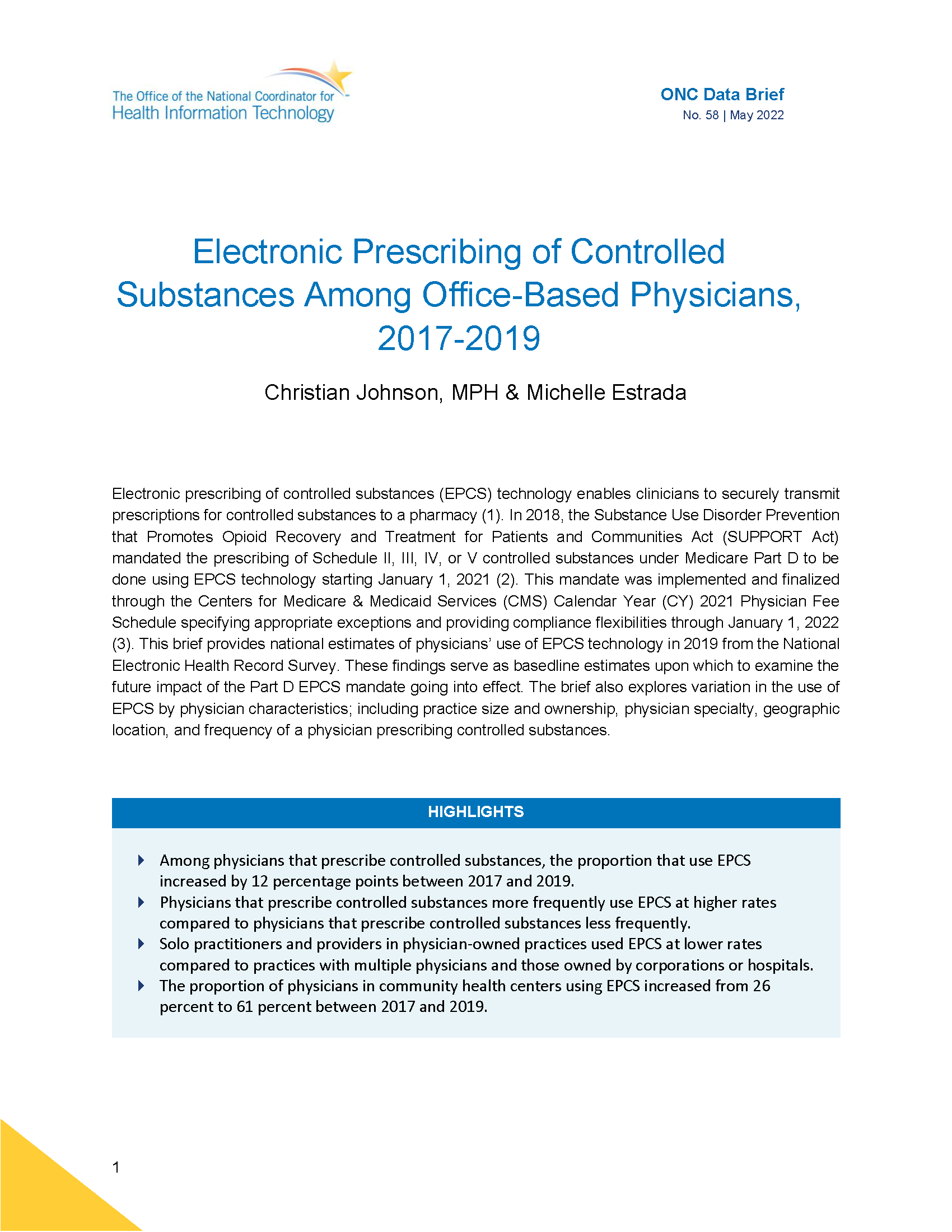
Electronic prescribing of controlled substances (EPCS) technology enables clinicians to securely transmit prescriptions for controlled substances to a pharmacy (1). In 2018, the Substance Use Disorder Prevention that Promotes Opioid Recovery and…
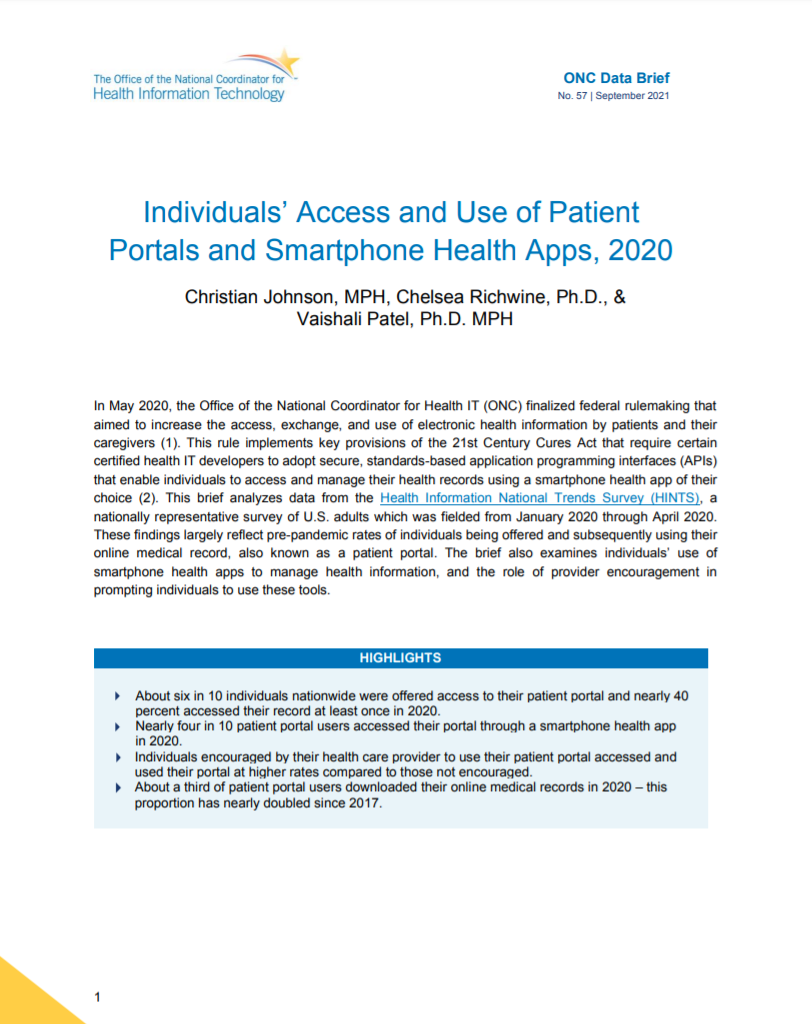
In May 2020, the Office of the National Coordinator for Health IT (ONC) finalized federal rulemaking that aimed to increase the access, exchange, and use of electronic health information by patients and their caregivers (1). This rule implements key…
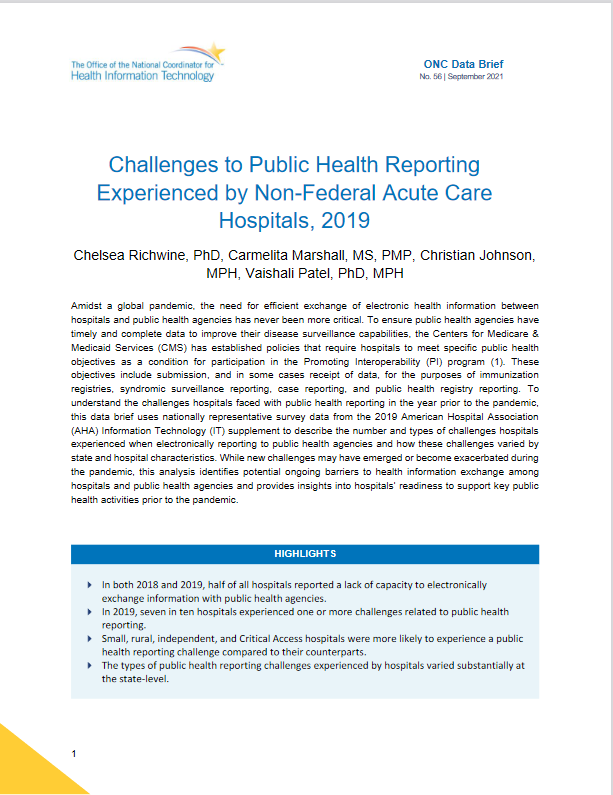
Amidst a global pandemic, the need for efficient exchange of electronic health information between
hospitals and public health agencies has never been more critical. To ensure public health agencies have
timely and complete data…
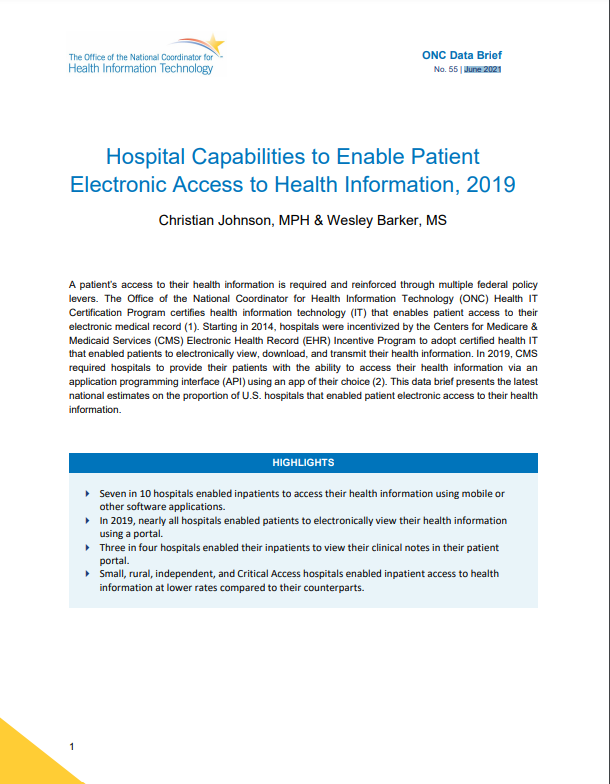
A patient’s access to their health information is required and reinforced through multiple federal policy
levers. The Office of the National Coordinator for Health Information Technology (ONC) Health IT
Certification Program certifies health…
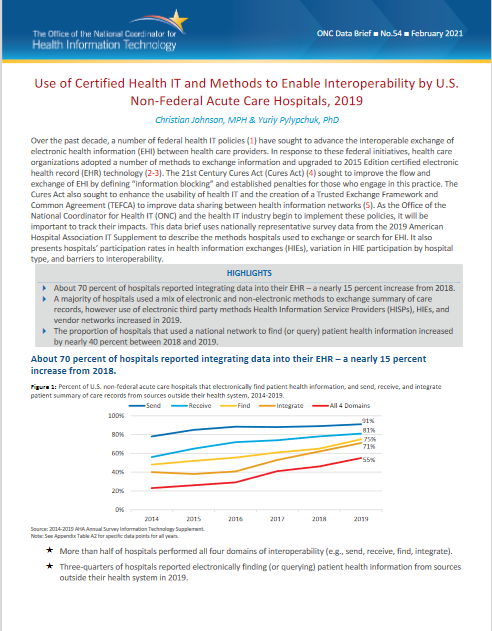
Over the past decade, a number of federal health IT policies (1) have sought to advance the interoperable exchange of
electronic health information (EHI) between health care providers. In response to these federal initiatives, health care…
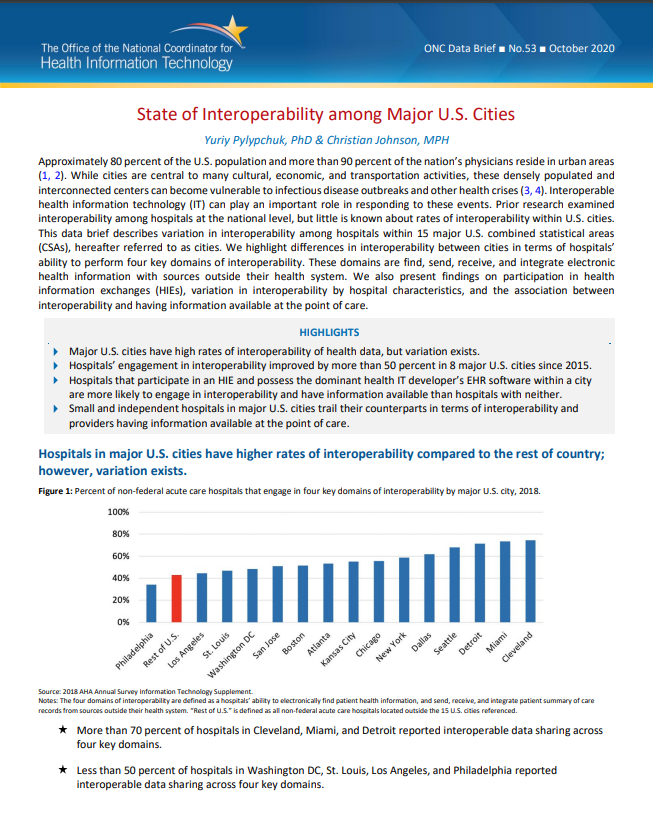
Approximately 80 percent of the U.S. population and more than 90 percent of the nation’s physicians reside in urban areas (1, 2). While cities are central to many cultural, economic, and transportation activities, these densely populated and…
![Variation in Methods for Health Information Management among U.S. Substance Abuse Treatment Centers, 2017 [pdf]](/sites/default/files/2021-07/substance-abuse-treatment-center-health-information-management-2017.png)
More than 20 million Americans suffer from a substance use disorder (SUD) each year. For these individuals, treatment is designed to help stop or reduce harmful substance misuse, improve health and social function, and manage risk for relapse.…
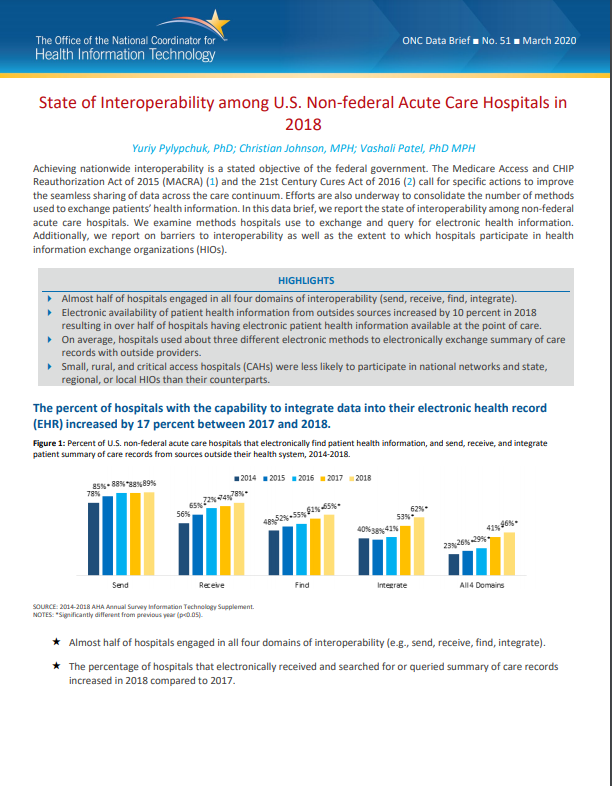
Achieving nationwide interoperability is a stated objective of the federal government. The Medicare Access and CHIP Reauthorization Act of 2015 (MACRA) ( 1) and the 21st Century Cures Act of 2016 (2) call for specific actions to improve the…
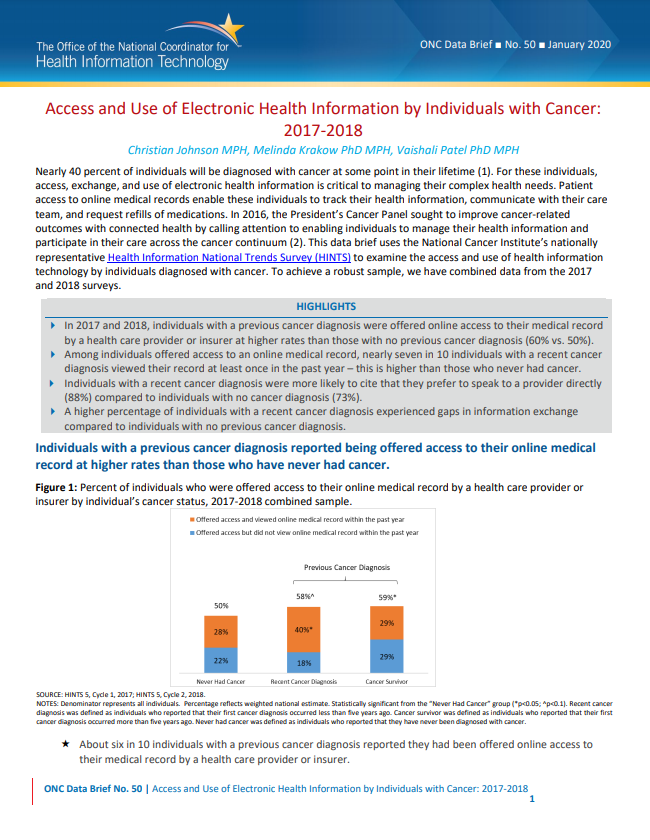
Nearly 40 percent of individuals will be diagnosed with cancer at some point in their lifetime. For these individuals, access, exchange, and use of electronic health information is critical to managing their complex health needs. Patient access to…
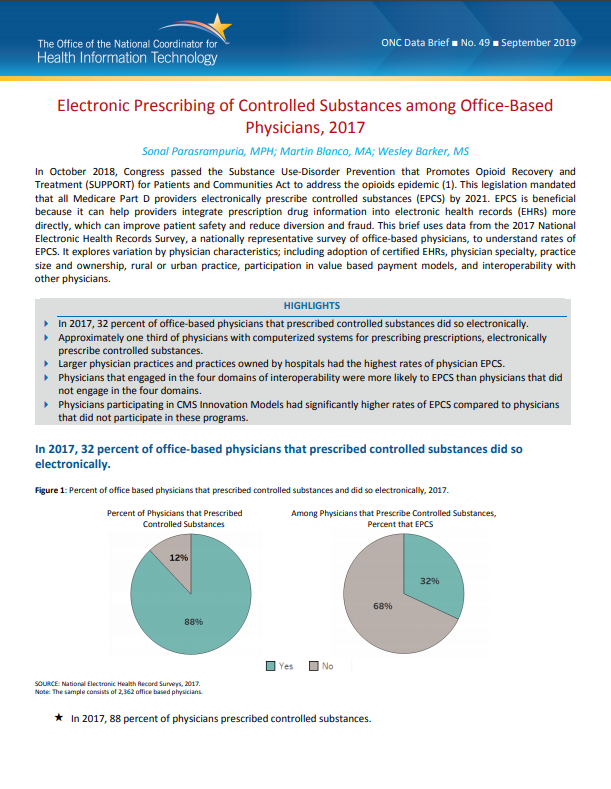
EPCS is beneficial because it can help providers integrate prescription drug information into electronic health records (EHRs) more directly, which can improve patient safety and reduce diversion and fraud. This brief uses data from the 2017…
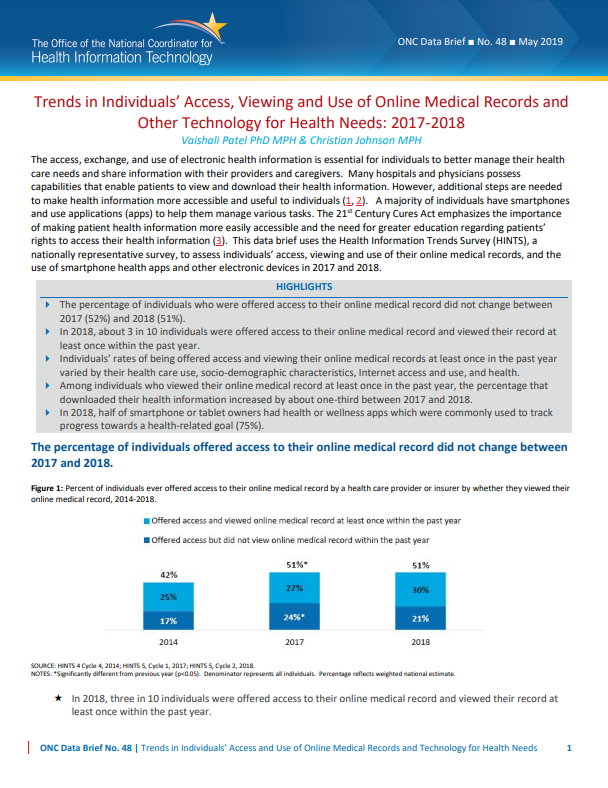
The access, exchange, and use of electronic health information is essential for individuals to better manage their health care needs and share information with their providers and caregivers. Many hospitals and physicians possess capabilities that…
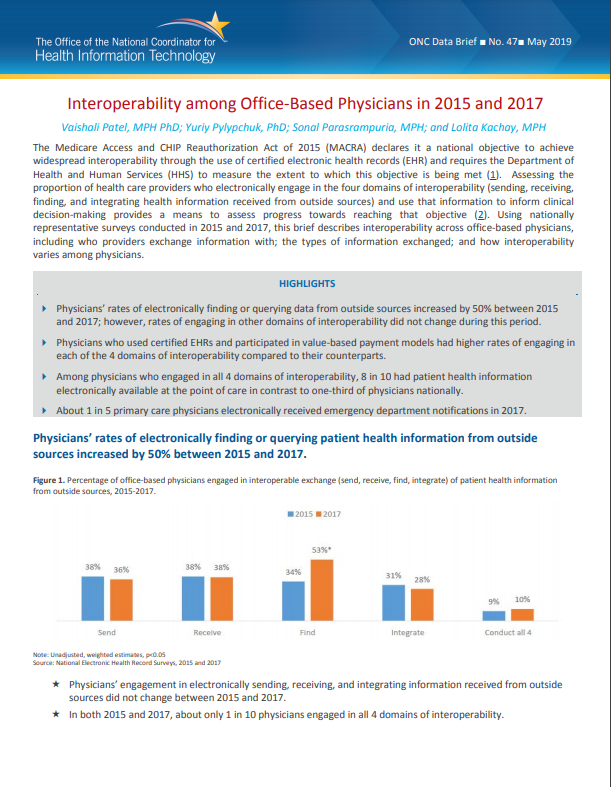
The Medicare Access and CHIP Reauthorization Act of 2015 (MACRA) declares it a national objective to achieve widespread interoperability through the use of certified electronic health records (EHR) and requires the Department of Health and Human…

With widespread adoption of EHRs, policy is now shifting towards the use of EHR data. EHR data can improve patient care by giving providers access to evidence based tools that assist with decision making and facilitating clinical practice by…
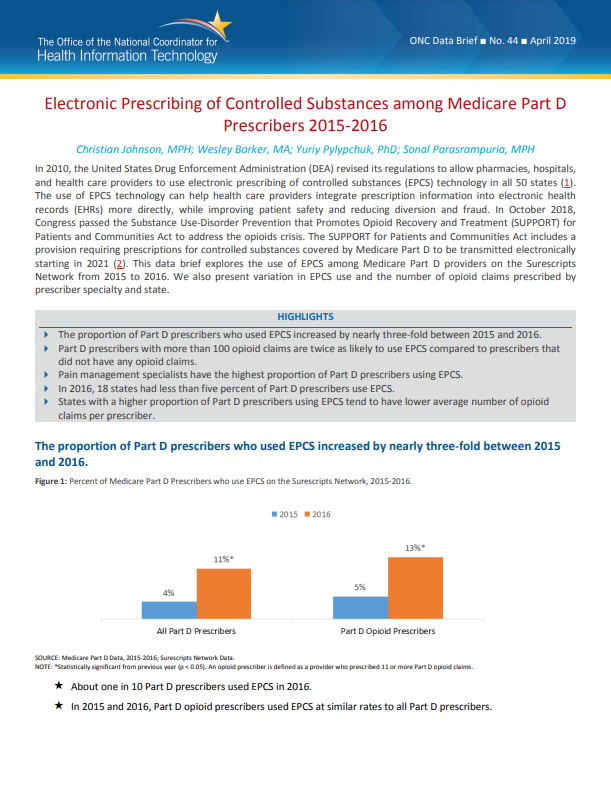
The use of EPCS technology can help health care providers integrate prescription information into electronic health records (EHRs) more directly, while improving patient safety and reducing diversion and fraud. In October 2018, Congress passed the…
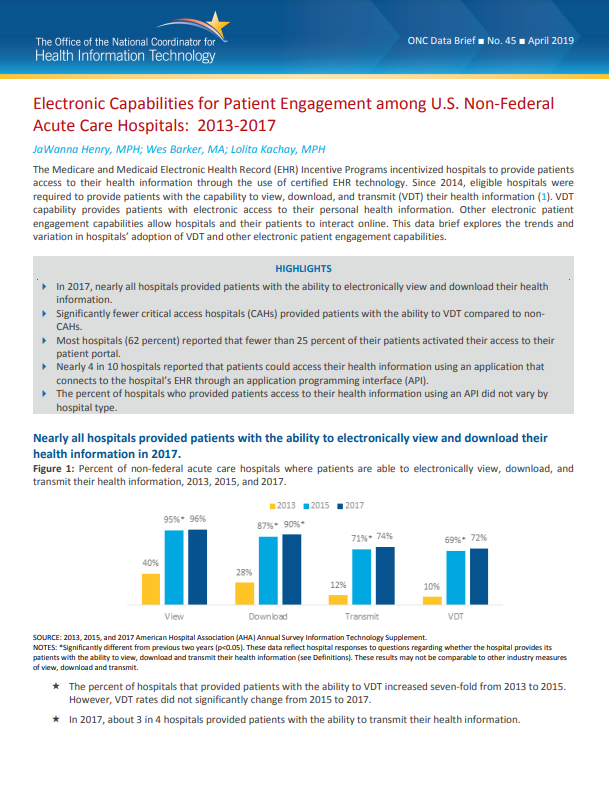
The Medicare and Medicaid Electronic Health Record (EHR) Incentive Programs incentivized hospitals to provide patients access to their health information through the use of certified EHR technology. Since 2014, eligible hospitals were required to…

Understanding the methods used by health care organizations to enable exchange and their capacity to do so is important. It provides context for how and where policy development and investments can streamline the complexity of exchange and address…
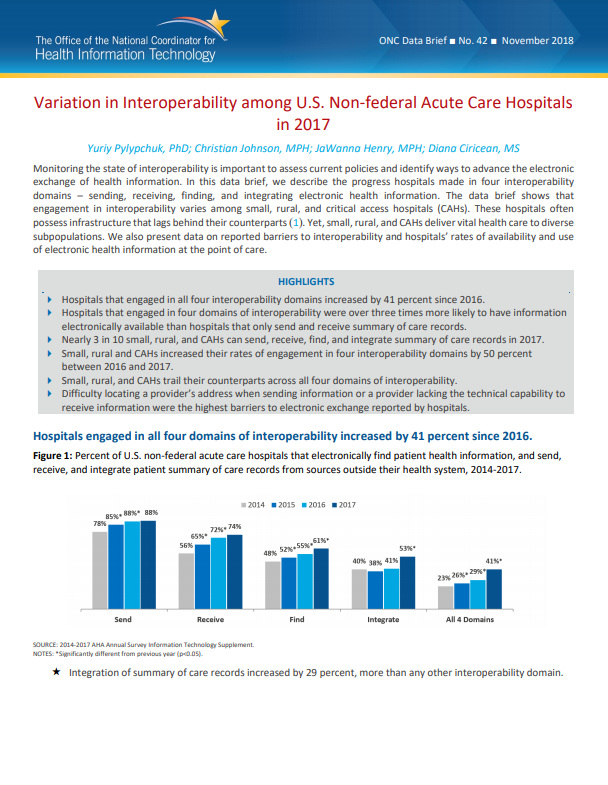
Monitoring the state of interoperability is important to assess current policies and identify ways to advance the electronic exchange of health information. In this data brief, we describe the progress hospitals made in four interoperability domains…

This brief describes the state of health IT use among HHAs and SNFs in 2017. Specifically, it presents key measures on electronic health record (EHR) adoption and interoperability from nationally representative surveys of SNFs and HHAs. The data…

